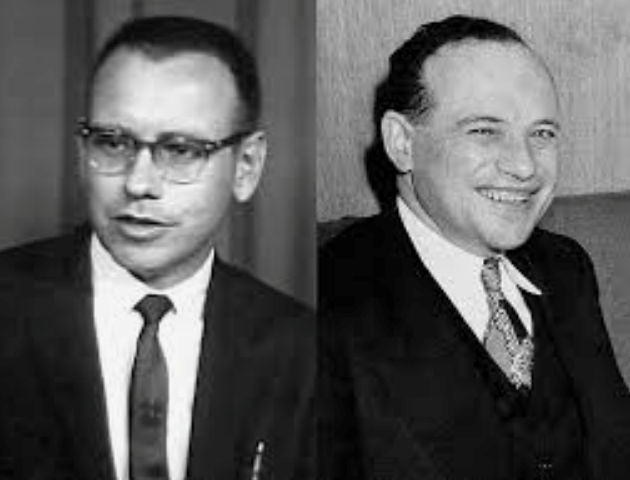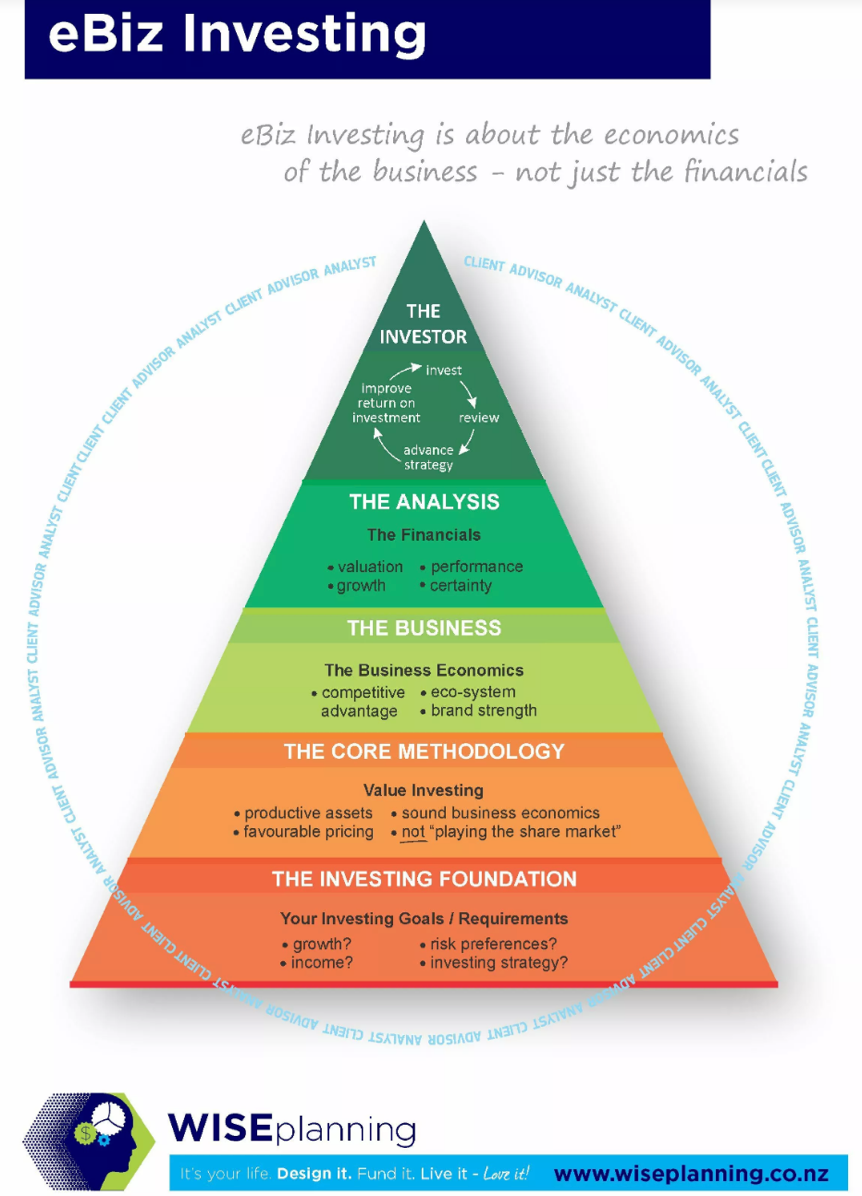Want Reliable and Profitable Investing?
Investment Perspective – December 2019

Peter Flannery CFP AFA
“Neither the investing method nor the fundamentals of the business are right or wrong because the mood of the market is favourable or unfavourable toward the “stock”. That is because when you really think about it, “stocks” (shares) are all about the financials and the trading price, the share price… the cash up value. What matters more is the economics of the business”
Peter Flannery


On the left hand side is a photo of a young Warren Buffett and Ben Graham. On the right hand side is a more recent photo of Charlie Munger and Warren Buffett.
Thanks to the wisdom and teachings of Ben Graham, Warren Buffett and Charlie Munger, we now have a reliable way to invest and to make money work – regardless of the economy and market conditions.
Where did value investing come from?
Benjamin Graham was a successful investment security analyst back in the 1920s and in the 1930s. In simple terms, he and many others were investing in the share market and reassessed how they were going about it after the 1929 share market crash and following depression.
Although this is a somewhat simplistic summary of what unfolded, Ben Graham, after the share market crash, having reassessed his stock selection model decided to adjust it so that he was looking for stocks that represented value (cheap).
Sometimes, because the market was very unhappy and prices were low, he was able to invest in stocks at a price that was in some cases below the total amount of cash that company held in their bank account.
In other words, he could invest in the shares of a company whose trading price was so depressed that he could obtain ownership in that company through shares (just like anyone can do today) but at a price that was below the total amount of cash that company held in its bank account at that time. This meant he could buy shares in the whole business at a very cheap price, getting not only the cash (or his share of the cash) but also (his share of) the rest of the business.
Interestingly, Ben Graham and others lost a lot of money because of the share market crash of 1929; however, having adjusted their model, they were able to take advantage of lower prices and go on to build more sustainable wealth in the long run.
Warren Buffett became a student of Ben Graham’s and then they worked together for a number of years, looking for companies whose prices were low, so that they could maximise the value that they achieved when buying shares at depressed trading prices.
Warren Buffett meets Charlie Munger
Warren Buffett and Charlie Munger met and became interested in what each was doing.
One day, Charlie Munger asked Warren Buffett, “Why, when you are buying shares, don’t you take into account the quality of the business that you are buying?”
Warren Buffett and Charlie Munger then began looking at the underlying business. What this meant was that they were then looking beyond the financials to now also looking at the underlying economics of businesses.
The transition from investing in stocks, to investing in businesses had begun.
TIP: Do you see that we are discussing not so much where to invest, but how to invest?
To be clear, investing in the economics of the business is quite different to playing the stock market by just using the financials as the basis for analysis.
Di-worsification
On one occasion, Warren Buffett and Charlie Munger were invited to a meeting of actuaries who were responsible for managing large pension funds. They challenged Warren Buffett about what they believed to be undue concentration risk (too many eggs in one basket) that Warren Buffett undertook when investing.
Around that time, Harry Markowitz had begun developing what today is known as Modern Portfolio Theory. Basically, after the 1929 share market correction and the ensuing depression, Harry Markowitz suggested that diversification for the purpose of minimising pricing volatility was key to investing success.
Warren Buffett and Charlie Munger however, had worked out and indeed had been practising value investing as we know it today. That is, to invest in the underlying business rather than play the markets.
Warren Buffett explained at this meeting of actuaries that he considered diversification damaging to investment performance and coined the phrase “di-worsification”. What he meant was that the more you diversify, the more you replicate the market. Diversification can actually reduce returns
Modern Portfolio Theory v Value Investing
Simply, wide diversification and dampening down pricing volatility can be suitable for those that are less concerned about maximising investment returns long term and favour minimising volatility along the way.
Modern Portfolio Theory treats volatility as a risk to be avoided at all costs. Although this, on the surface, seems logical, however when you consider that lower prices to someone practising Modern Portfolio Theory means more risk, this whole idea suddenly stops making sense …
For us as value investors, lower prices mean better value, particularly when we are investing in a quality business. So, value investing negates the need to widely diversify to reduce risk. This means a more narrow and more concentrated portfolio, which in turn helps maximise investment returns.
Let’s face it, when you look at any sector in the market, it is not possible for every company in a sector to have the number one position because it has the strongest competitive advantage. There can only be one (maybe two).
That is why when we diversify widely, we are slowing down the long term performance. Hence, Warren Buffett’s quip that diversification is really di-worsification (of return on investment – ROI).
Introducing eBiz investing

Now in 2019 we have eBiz Investing.
The above diagram outlines eBiz investing, which is the latest advancement of value investing.
In last month’s Investment Perspective, I highlighted the importance of changing from ‘where to invest’ to ‘how to invest’. This is important because we know that people all over the world invest in many different types of investments. The reality is that it is not where people invest that makes one investor more successful than another but rather how they invest. Investing methodology is key.
Warren Buffett and Charlie Munger have demonstrated this repeatedly over more than half a century – it is no fluke. The value investing methodology works across a variety of timeframes and market cycles and economic conditions – fact.
The Game Changer for Investors
Value investing as a methodology is not just about buying things cheap.
“Price is what you pay, value is what you get.”
Benjamin Graham
While paying as little as possible for investments is not necessarily a bad idea, this became known by Warren Buffett and Charlie Munger as what they termed, “Cigar butt investing.”
The idea is that you could pick up a cigar butt that someone had discarded into the gutter. It would cost you nothing and you could get a few puffs for free; however, that quality of that experience would likely be marginal at best! Do you see what I mean?
Thanks to Charlie Munger, Warren Buffett began looking at the underlying business by focusing on the economics of the business.
For example, a business with a sustainable competitive advantage allows it to grow possibly faster than its competitors and to do so because it is gaining market share from its competitors.
In addition to that, the business with a competitive advantage has stronger pricing power. Simply, they can charge more for their goods and services because of their advantage. This means improved profitability, which in turn translates into investors making more money, particularly in the long run.
To be clear, this is a long way from speculating on the latest hot stock that share brokers, fund managers and popular media recommend and talk about relentlessly. Indeed, these days it can be difficult for some to differentiate between popular media and legitimate market intelligence, research and analysis. The lines have become blurred.
eBiz investing works because …
eBiz Investing has been developed to focus on the economics of the underlying business (this has been also extended to residential property and closely held small to medium sized (SME’s) business too).
eBiz Investing works because it is based on the fundamentals as opposed to market driven variables.
For example, the trading price is a popular method of valuing a business – the idea is that a willing buyer and a willing seller = the value. Although there are some companies whose prices have risen strongly over time and are also good businesses as well, for you and I, it is important that we have a methodology that we can apply at will and one that is reliable.
eBiz Investing works because the economics of a business are intrinsic and fundamental. eBiz Investing works because it is a methodology that enables us as investors to succeed long term regardless of economic conditions and because of markets and volatile prices. The lower the price, the better the value for good businesses with sound underlying economics.
“If you want to find out about the road ahead, then ask about it from those coming back.”
Chinese Proverb
